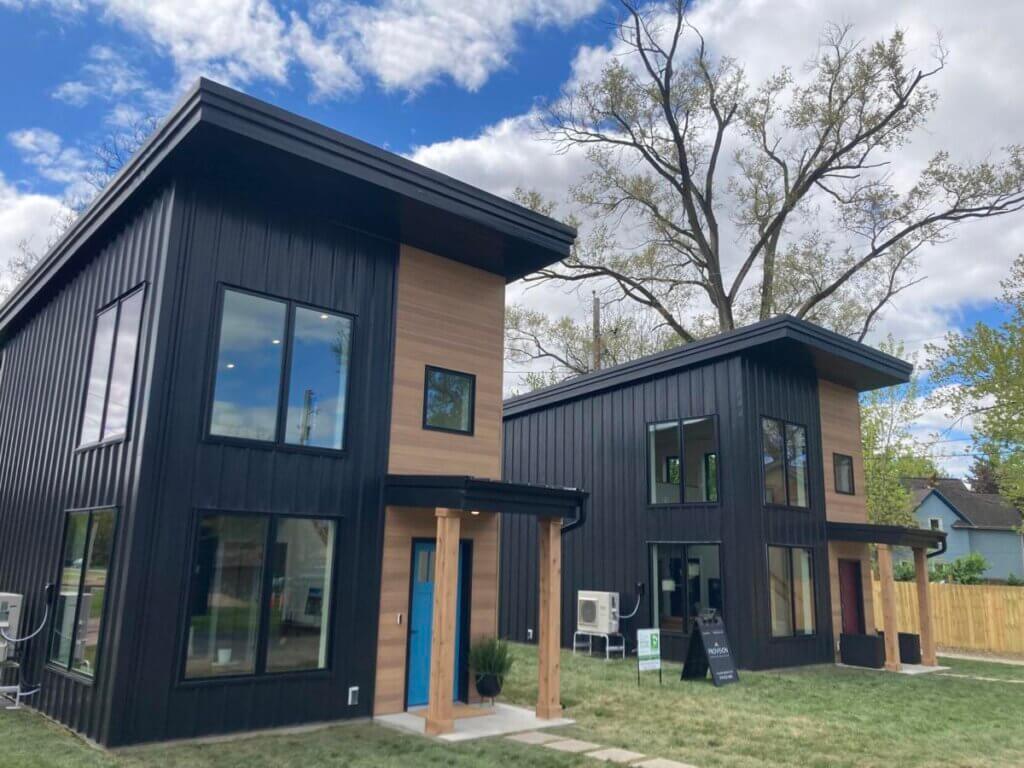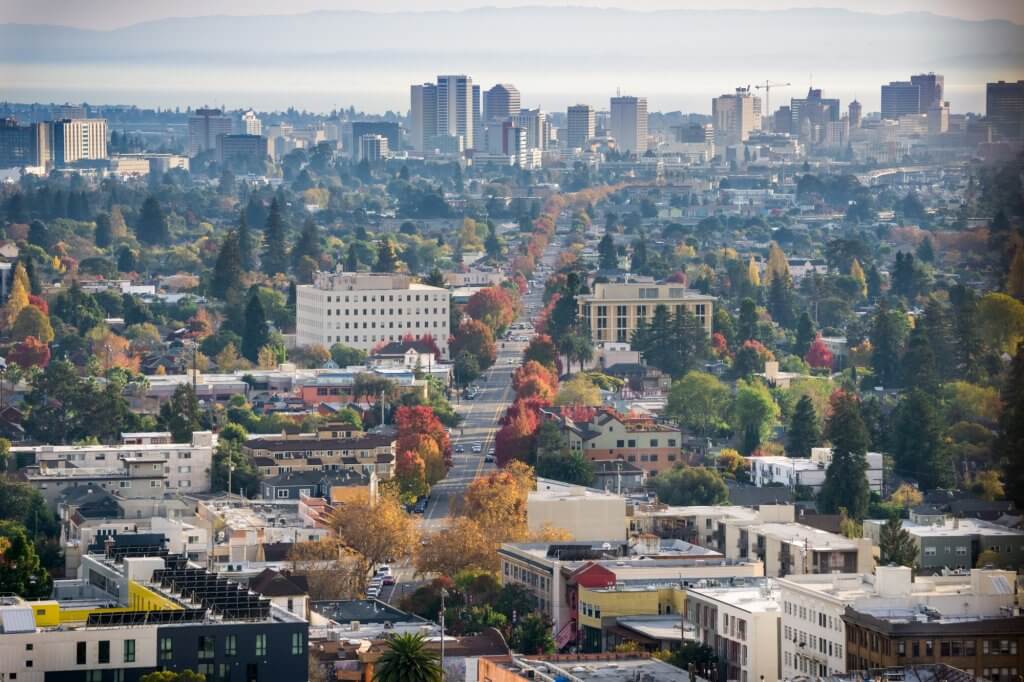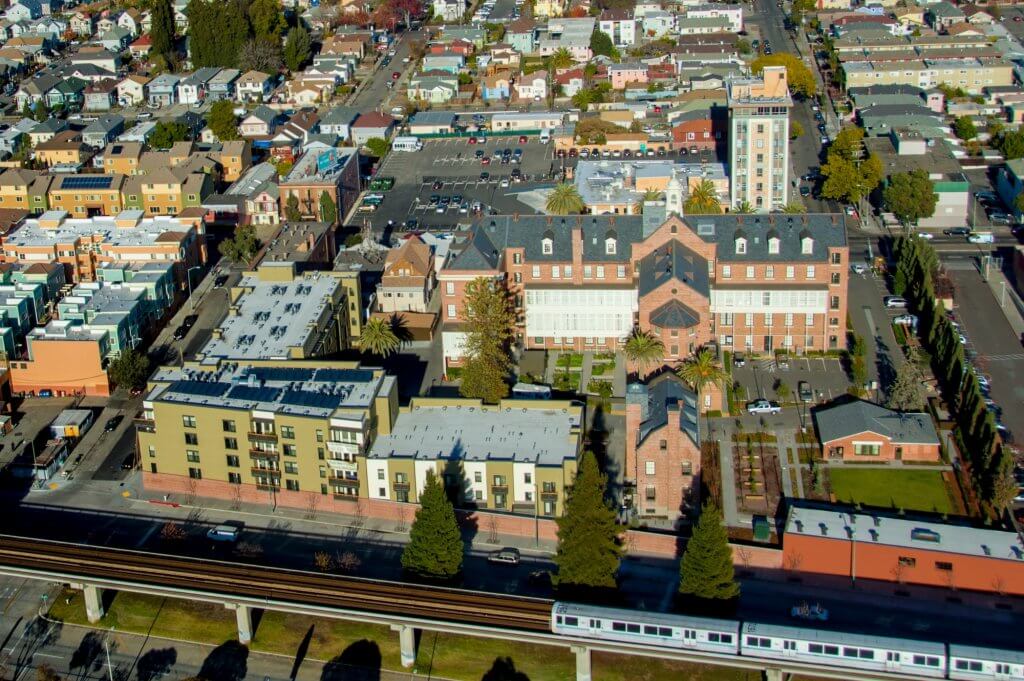California’s HOME Act Turns One: Data and Insights from the First Year of Senate Bill 9
Published On January 18, 2023
The California HOME Act—otherwise known as Senate Bill (SB) 9—took effect on January 1st, 2022 and makes it possible for homeowners to split their home’s lot and build up to four homes on a single-family parcel. Upon the law’s passage, some hailed it as a major victory for zoning reform that would open up new avenues for small-scale homebuilding in previously exclusionary places. Others feared that the law might lead to speculation and unchecked growth at the expense of community character and vulnerable residents.
One year in, we find that the impact of SB 9 has been limited so far. Some of the state’s largest cities reported that they have received just a handful of applications for either lot splits or new units, while other cities reported none. In this commentary, we take a first look at SB 9’s preliminary outcomes by assessing new housing development enabled by the law in a handful of jurisdictions statewide, exploring how many applications were submitted, and talking to local planners about why the numbers are so low.
What is SB 9?
SB 9 allows homeowners to create up to four homes on an existing parcel, in effect, eliminating single-family-only zoning. Crucially, the law allows the owner to “split” their lot, which makes it easier to sell or finance additional homes on a single parcel. A 2021 analysis by the Terner Center estimated that over 700,000 new homes would be newly feasible to build if SB 9 passed and taking into account on-the-ground market dynamics. However, we noted that it would be unlikely that anywhere near this number of homes would actually be built. Homeowners face multiple barriers to using SB 9 to split their lot and create new homes, including high construction costs and/or lack of expertise with homebuilding. We also found that local governments have created restrictions that limit the potential of SB 9. Our June 2022 analysis of a sample of ordinances from around the state found that some local regulations—such as low maximum unit size, height limitations, and other design rules—may render the construction of SB 9 homes infeasible.
Is SB 9 being used?
To answer this question, we collected data from thirteen jurisdictions across the state on applications received and approved for both lot splits and new homes as allowed under SB 9. Cities were selected based on our 2021 analysis showing where SB 9 projects would most likely be financially feasible, as well as cities that have had high accessory dwelling unit (ADU) production relative to their population. Relatively high ADU performance is a relevant metric for this analysis given that the size, scale, and location are likely to be similar—often owner-occupied single-family parcels—for ADU and SB 9 projects. We also interviewed eight planning professionals from four of these jurisdictions to better understand how SB 9 uptake has played out in those communities.
We found that SB 9 activity is limited or non-existent in these thirteen cities (Table 1). Los Angeles had the most overall activity, with 211 applications for new units under SB 9 in 2022. The state’s other large cities all reported very few applications for lot splits or new units. For example, the city of San Diego reported receiving just seven applications for new SB 9 units in 2022. To put these numbers into context, the city of San Diego permitted over 5,000 new homes in all of 2021 and Los Angeles permitted just under 20,000 new homes in 2021.
Table 1. SB 9 Applications Received and Approved through November, 2022
| Jurisdiction |
How many applications for lot splits has your city received? |
How many lot splits have been approved in your city? |
How many applications for SB 9 units has your city received? |
How many applications for SB 9 units has your city approved? |
| Anaheim |
2 |
0 |
1 |
0 |
| Bakersfield |
0 |
0 |
0 |
0 |
| Berkeley |
1 |
0 |
5 |
0 |
| Burbank |
1 |
0 |
7 |
2 |
| Danville |
20 |
13 |
0 |
0 |
| Long Beach |
1 |
0 |
1 |
0 |
| Los Angeles |
28 |
0 |
211 |
38 |
| Sacramento |
9 |
6 |
9 |
8 |
| San Diego |
3 |
0 |
7 |
0 |
| San Francisco |
4 |
2 |
25 |
4 |
| San José |
10 |
5 |
1 |
0 |
| Santa Maria |
0 |
0 |
0 |
0 |
| Saratoga |
21 |
2 |
15 |
1 |
Among our sample, the smaller cities of Saratoga and Danville stand out for having a relatively higher number of SB 9 applications. Saratoga reported 15 applications for SB 9 units and 21 applications for lot splits in 2022. By comparison, the city permitted 71 total units of housing in 2021. Likewise, the city of Danville reported receiving 20 applications for lot splits, though no applications had been received for new units.
What’s going on?
First, why Saratoga and Danville? The overperformance of these two cities relative to others in our analysis may be partly explained by the fact that these cities have larger single-family lot sizes. Planners from each jurisdiction we interviewed have seen that SB 9 seems to work best on larger lot sizes which allow for more room to build one to two new homes and noted the larger lot sizes in Saratoga and Danville. In addition, most homes are located in the center of their parcel, making the addition of another house geometrically difficult on a smaller lot size. Saratoga and Danville also have significantly higher home sale prices, making it more likely that splitting a lot will be financially beneficial to the homeowner.
Second, why not cities that have seen relatively high levels of ADU development? San Diego has seen almost no SB 9 activity, despite high levels of ADU construction, with 871 ADUs permitted in 2021. Similarly, Santa Maria, which permitted 401 ADUs in 2021, reported receiving no applications for SB 9 units or lot splits. This contrast is worth pointing out given that ADUs are similar in size and location to new SB 9 units. Planners in cities with high ADU development that we interviewed hypothesized that more prescriptive state ADUs laws are likely pushing homeowners interested in creating new units towards ADUs. Recent changes in ADU laws—including laws that limit impact fees, remove owner-occupancy requirements, and allow for larger units—have made it easier to build Currently, however, SB 9 does not have this same flexibility. In fact, we found in a previous analysis that some cities are imposing additional requirements on SB 9 projects, including guidelines that are prohibited by state law for ADUs. As such, it may be more attractive for a homeowner to pursue an ADU rather than an SB 9 project.
In addition, local ADU incentive programs are likely having an effect. Planning staff in San Diego and San José noted that their local ADU policies may preclude interest in SB 9. For example, San Diego allows larger ADU sizes and bonus ADU units (which allow owners to build multiple units on a single lot) in exchange for restrictions to make the units available to people with moderate incomes. San Diego and San José also adopted fairly permissive SB 9 implementing ordinances, as noted in our previous analysis. However, their ordinances, while more accommodating of SB 9 development than other cities, still do not match the incentives offered to homeowners considering ADUs, such as limiting impact fees or offering pre-approved design plans.
Why does this matter?
SB 9 has the potential to help solve the state’s housing shortage, particularly by creating more units in single-family neighborhoods and providing entry-level homeownership opportunities, but only if the law’s promise is realized through implementation. It is still too early to say that SB 9 is not working. Limited uptake of the new law may be impacted by the capacity and staff constraints that many planning departments are experiencing, alongside rising interest rates,high inflation, and ongoing supply chain/construction disruptions.
However, it is also not too early to think of ways to strengthen SB 9 and remove ongoing barriers for homeowners interested in building more units on their property. Low numbers of applications for SB 9 projects so far do not necessarily imply low interest overall. Planners told us that while applications for SB 9 have been low, inquiries to their departments about SB 9 are high. That these inquiries have largely not yet translated into a correspondingly high number of applications may simply reflect the time and resources needed to pursue an SB 9 project as well as the aforementioned benefits of pursuing an ADU instead. However, the discrepancy could also suggest that more can be done at the local and state levels to improve overall utilization.
Below are three specific areas that policymakers should examine to improve uptake of one of California’s recent signature housing laws:
Create more prescriptive state standards for SB 9 homes. SB 9 uptake could be improved by creating more prescriptive land use and zoning standards to enable greater SB 9 feasibility. This approach is one reason that ADUs have become a California success story, going from an insignificant share of the state’s housing growth to nearly a fifth of all new units permitted statewide in just six years. This growth took time and persistence, with several rounds of legislation leading to the current ADU boom. SB 9 could benefit from similar legislative efforts. These efforts could include establishing more flexible standards for new home design—such as larger maximum home sizes and heights—and limiting extra costs—such as impact fees, particularly for single-family home to duplex conversions. In addition, planners we interviewed noted that SB 9’s owner-occupancy requirement is likely limiting uptake. Policymakers may consider revisiting this requirement to encourage higher usage, while maintaining proper guardrails to protect against speculation by institutional investors and displacement in vulnerable communities.
California’s Department of Housing and Community Development should also consider pathways for jurisdictions to better leverage SB 9 for meeting future Regional Housing Needs Assessment (RHNA) goals. One such change could be allowing cities to include more aggressive growth rate assumptions in their planning if that city is taking proactive approaches to implementing SB 9. This shift would create an incentive for local governments to bolster educational outreach to residents and pursue more comprehensive implementation, as many have done with ADUs.
Adopt more flexible local SB 9 ordinances. Cities have a role to play in the success of SB 9 as well. Even without new state legislation, local policymakers can consider adopting policies to improve SB 9 uptake, such as limiting fees and creating clear guidance and procedure for homeowners. Local policymakers can also consider additional strategies to increase housing supply in low-density neighborhoods outside of the state’s SB 9 framework, including by increasing housing options above and beyond duplexes and creating design standards that facilitate several types of small-scale infill development. Some cities, such as Berkeley and Sacramento, have begun exploring this approach. A comprehensive local approach to missing middle housing can greatly complement the goals of SB 9.
Address homeownership barriers. SB 9 has the potential to create more small-scale homeownership opportunities that are affordable to moderate-income buyers, but significant obstacles that are specific to homeownership development under SB 9 remain. Specifically, legislators should reassess requirements under certain policies such as the Subdivision Map Act and construction defect liability laws which increase costs and deter the construction of homeownership projects, as identified in our previous research on missing middle housing. These policies accrue costs that might otherwise be absorbable in the context of larger-scale homebuilding, but can make new small-scale for-sale homes financially infeasible to build. Legislators should consider creating exemptions or special categories for small-scale homeownership projects such as those allowed under SB 9.
What’s next?
The passage of SB 9 in 2021 was hailed by many as a significant housing milestone that could create meaningful amounts of new homes in high-resourced neighborhoods while partly addressing the nefarious origins of single-family only zoning. However, ensuring major policy shifts achieve their intended goals often requires a sustained effort beyond one legislative cycle. Relatively low usage of SB 9 thus far indicates that the law could benefit from changes to its current form. For SB 9 to fulfill its promise, we should continue to monitor its impacts and legislators should consider revisiting the program as we enter the second year of implementation. As California enters a period of increased economic uncertainty—as shown by the governor’s recent budget proposal and pending spending cuts—it is crucial to set up SB 9 for success now to ensure homeowners can make use of the law when economic conditions improve.
Acknowledgments
Many thanks to the San Francisco Foundation for their support of this work. Thank you to the planning professionals at the cities of Danville, San Diego, San José, and Santa Maria for sharing their insights as part of this analysis. We would also like to acknowledge Celeste Goyer, Jared Basler, Ned Resnikoff, Nolan Gray, and Ryan Joy for their review. Thank you to our Terner Center colleagues Ben Metcalf, Carolina Reid, and Ryan Finnigan as well as Terner Fellow Bill Fulton.
This research does not represent the institutional views of UC Berkeley or of the Terner Center’s funders. Funders do not determine research findings or recommendations in Terner Center’s research and policy reports.





